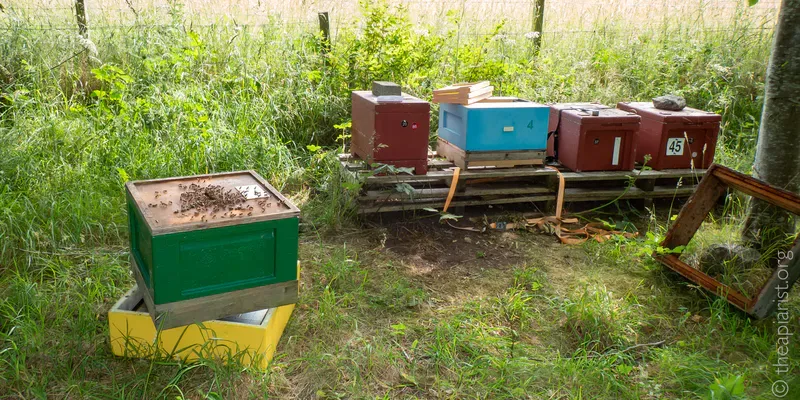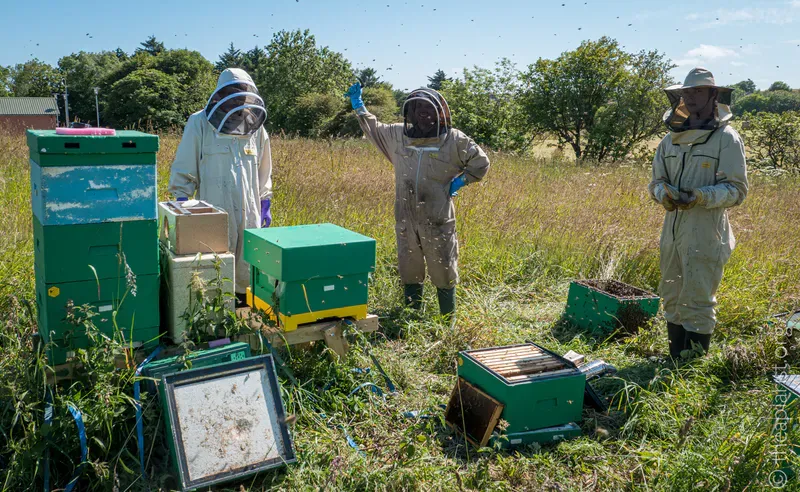How to : The shook swarm

It will come as no surprise to regular readers, or anyone with more than a couple of years of experience, to be told that beekeepers have opinions.
Actually, I'd go one step further than that, beekeepers — at least some beekeepers — are very opinionated.
Some favour management techniques, like 'brood-and-a-half', that others consider the work of the devil. Some are happy to clip the wings of their queens as part of swarm control, others think the method is barbaric and causes irreparable physical and psychological damage to the queen.
We live in an increasingly polarised world, where differences are amplified, and the rational middle ground containing the facts and the compromises, are often ignored.
Queen clipping does help with swarm control, but it is probably detrimental to a very small proportion of queens {{1}}. Of course, the exception is 'brood-and-a-half', which has zero redeeming features and truly is the work of the devil 😉 {{2}}.
Sponsors get more … posts, news, and information on the science, art, and practice of sustainable beekeeping. They also have access to over a decade of legacy posts, and ensure The Apiarist continues to appear every week.
Marmite beekeeping
All management methods have benefits and drawbacks, and sometimes the way they are applied determines how effective they are.
Done at the wrong time, the method fails, and the beekeeper decides it's a worthless or unreliable technique.
Applied appropriately, things work well, and the beekeeper becomes a strong advocate … and confident when using it again.
Shook swarming is one such method.
Like Marmite, beekeepers often either love it or hate it.

Many consider it 'hard on the colony', or 'stressful', and would only consider doing it when instructed to by a bee inspector to control European foul brood (EFB).
You'll see statements such as “I wouldn't ever do it to my bees as I like them too much!”
Whilst sentimentality might have a place in beekeeping, you'll usually see no qualification or definition of the terms 'stressful' or 'hard on the colony'. I suspect they're included as a justification for not doing something, without being particularly meaningful.
Done poorly, at the wrong time, on the wrong colony and in the wrong way, and the bees will take a long time to recover … but that's hardly a fair way to assess the method.
Others — and I include myself in this camp — know that a shook swarm, done at the right time, in the right way, on a suitable colony, can be very beneficial for the long-term health and productivity of the bees.
So, what is a shook swarm, and how do you do it?
And, having done it, what can you do soon afterwards to further improve the health of the colony?